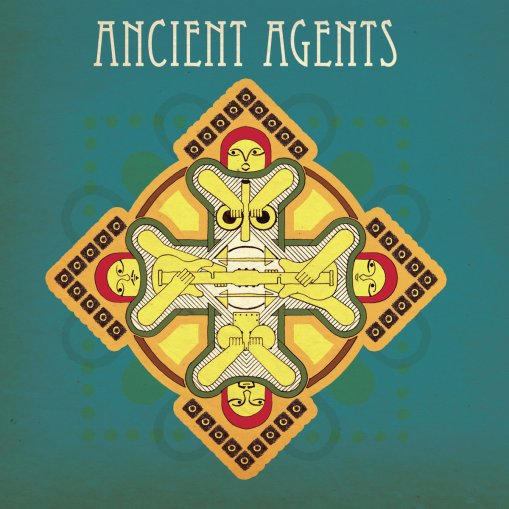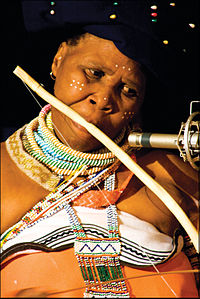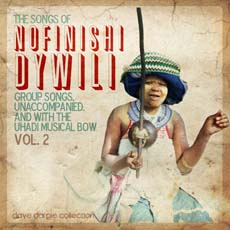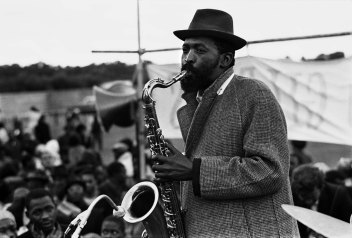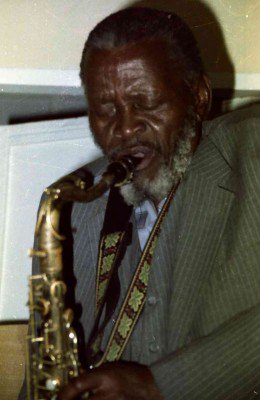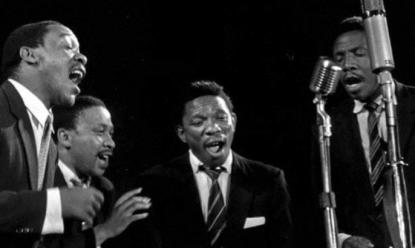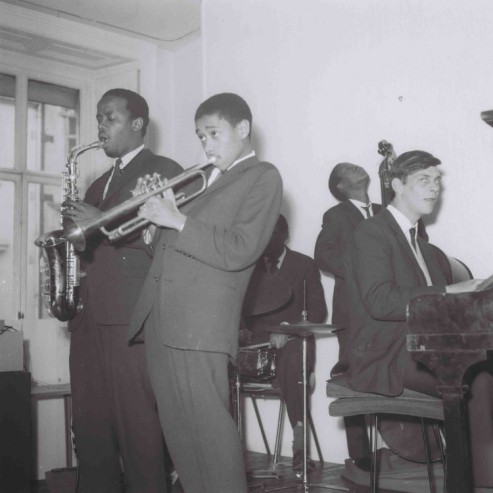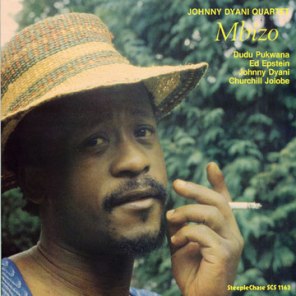Happy Heritage Day – or, as capitalist Big Food has renamed it, National Braai Day.
Eish!
Evidently, some South Africans are so terrified of engaging with how we differ, and bring different things from our backgrounds and experiences to today, that they’d rather risk death from overdoses of carcinogenic charred meat, alcohol, salt, and high fructose corn syrup. It’s a complete lowest common denominator cop-out: the fact that whole human race has, at some point in its evolution, consumed food cooked over an open fire, is trivial.
So it’s refreshing to have music to discuss today that engages thoughtfully and intelligently with heritage, as well as being a really cool listen. It’s even better when the release introduces musicians who are not the usual suspects.

Water, the longest track on trio Kinsmen’s debut release, Window To The Ashram (https://store.cdbaby.com/cd/kinsmen ) starts with soft solo notes dropped from Muhammad Dawjee’s saxophone. Shailesh Pillay’s tabla and Dhruv Sodha’s sitar join in, and the sound grows. The strands weave together into a full, complete melody, surging forward and buoying the listener’s spirit. It’s like raindrops trickling into rivulets that unite to form a strong, flowing river. Somebody who doesn’t know the group might be tempted to take those sonic cues of structure and instrumentation, plus the musicians’ names, nod knowingly, and say: “Ah, Mother Ganges…”
But water flows like that in every country – and such an easy, stereotyped label is about as far away as you can get from the intention of Kinsmen’s music.
“We have to start with the Indian-ness we have now,” asserts Dawjee. “And that’s a South African experience.”
All three players grew up in Laudium in Pretoria (see the Laudium video on their FB page at https://www.facebook.com/kinsmen.art/ ), and parental aspirations played an important part in how they related to music. Dawjee’s father was an enthusiastic amateur saxophonist (“He used to play on the balcony…as a kid, I was taken by the sound – it reminded me of elephants!”) By the age of six, he had started handling the instrument and demanding lessons. But his music teacher deemed him too small for a sax, so he started on clarinet, only later moving to the larger instrument. He was intrigued, too, by the sound of the sitar on his father’s Ravi Shankar album. Dawjee’s family however did not see music as a profession, so he trained as an architect, getting, he confesses, “terribly out of practice” on his horn during that time of intensive study.
Sodha’s family had enthusiasm for the idea “of playing in temple” and so he began lessons on tabla and then flute. His teacher had a sitar too “and I got fascinated by the sound of the instrument in Bollywood movies. The Internet too – at that time there were about two Google sitar videos and I played them over and over!” Sodha liked the idea that the sitar had no equivalents among Western instruments. Eventually he began taking two-month trips to India to develop his skills. “It demands commitment. If you stop for even a few weeks the grooves on your fingers disappear.”
Today, he remains influenced by classical Indian vocal music: “the sitar is always aspiring towards voice.”
For Pillay, “My folks tried to help us to do things they hadn’t been able to do.” His early music education gave him a general background in Indian classical music; only as he grew did the tabla “become really something for me.” By training, he’s an actuary, and he ruefully concedes that yes, he can perceive links between intricately counted rhythms and those actuarial numbers – “as well as,” (he rolls his eyes), “having to be the band’s financial manager!” Today, his drum listening is broader: he says he’s “mesmerised” by Sikh rhythm styles played on the jori drums.
The three established their musical collaboration via friends of friends. “We initially thought it would be a nice hobby”, says Pillay. “Yes,” adds Dawjee, “we never expected to have this. Then, about a year ago, something just clicked in our music.”
A conversation with Kinsmen is often like that: they complete one another’s sentences without any jockeying for dominant voice, and that’s apparent in the playing too. “We bring plans and preconceptions to rehearsals,” says Pillay, “but the emotions of playing together change everything…I can start a 7-beat and the others pick up on it: it’s not the melodic instruments that must always lead.” Adds Dawjee: “We workshop ideas and they’re mostly joint compositions. It never matters who brought the original idea – it couldn’t have gone where it did without the collective.”
For Kinsmen, the formulaic, Orientalised way Indian classical music is packaged for South African audiences is a concern. The three describe what they see in press releases: “exotic,” “unattainable discipline”, “ancient craft”. “I get frustrated ,” says Dawjee. “As a person of Indian descent in South Africa, I can relate to the music’s virtuosity, but not to all that.
“I was struck by what [saxophonist] Shabaka Hutchings was doing as a British person of African Caribbean decent, coming here to South Africa, exploring roots with a real openness about how he could attach to them. For me, that’s one thing that drove the cause of Kinsmen. Because those concerts don’t necessarily offer younger audiences something they can relate to. We’re South Africans now.” Adds Pillay: “Even though our training allows us to understand the music, the environment of those concerts is everything we’re not.” “Finding our identity,” sums up Sodha, “is central to Kinsmen.”
Much of that searching is expressed in the album’s opening track, The Calling. Sodha explains: “It’s one of the first pieces we collaborated on, and we always open with it. The way it opens signifies fear and mystery: a mood almost of sunset in a forest and all the animals rushing for safe shelter.” But that image also serves as a metonym, says Dawjee: “It’s the apprehension of what the music will bring…will instruments with different idioms find a common language? And through the tune we all had a chance to express our presence, and reach a sense of arrival – from apprehension to courage.” “There are no boundaries when we work together,” elaborates Pillay. “And there are no conflicts of style – even subtle ones. There are only three human beings there.”
In contrast, the second track, J, is melodically simpler: an innocently romantic theme with the mood of first love. That contrast is deliberate programming after the intensity of The Calling.
All the tracks on Window to the Ashram share a feeling of tales being told, and it’s that “exploration of narrative through improvisation,” says Dawjee, that locates the music in a jazz context, – although he concedes that the ‘jazz’ label carries at least as much bothersome baggage as the ‘Indian music’ one. He alludes to features he hears in the music of John and Alice Coltrane – “finding the gaps around one tonal centre”, and the sense of exploration. The way [bassist] Carlo Mombelli’s work on Stories was underpinned by a sense of unfolding narrative was also influential – “hearing that album was one of the things that got me playing again.”
Listeners to Mombelli and similarly thoughtful jazz composers will find much to appreciate here – although it is very different music. Kinsmen’s album leads the listener on a journey that takes in the lushly romantic, the controlled and meditative (Unsung Hymn), some remarkably catchy melodic hooks, and intricate rhythms. It explores improvisatory traditions from both its key sources, and, beautifully, gives each track the space it needs to breathe. Ideally Suited involves Dawjee and Sodha in a careful negotiation of dialogic space, something else reflecting Kinsmen’s musical priorities. “Initially,” says Pillay, “we thought we had to fill all those spaces – now we know we don’t.” (In those days, they were playing Simon and Garfunkel covers too…) “Now”, adds Dawjee, “we understand how important it is to articulate and shape the silences in the music.”
South African music drawing on here, jazz and South Asia are not new: many compositions of Deepak Ram and Surendran Reddy, for example, explore that direction too. And, of course, there’s the legendary collaboration that was never recorded: Ram’s recollection of his elder brothers, players of sitar and sarod, jamming with legendary reedman Kippie Moeketsi in the family garage in the Sixties. But there’s probably much more than that un-documented, and Dawjee has one example.
He recalls how his grandfather was one of those who started a marching brass band, the Muslim Brigade, in Laudium. Over the decades since, community attitudes to music have become more conservative, “But I wonder,” he says, “what and how did music enable the very diverse community of Marabastad to be, and think, and do…”

Like Dawjee’s grandfather, we are all not merely recipients of heritage but makers of it in how we choose to live. We can and should make conscious choices about the attitudes and practices we want to adapt, reject or hand forward to the future.
Please step away from the lamb chops for a moment and think about that.
- Kinsmen have upcoming gigs in the next couple of months at the Groot Marico festival and in Cape Town and Durban – details on their FB page.




